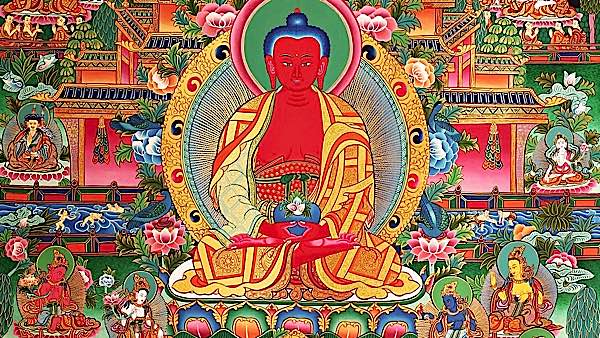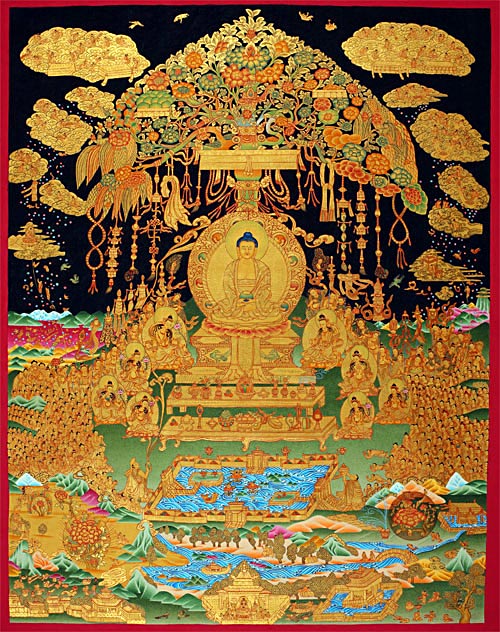The main goal in Buddhism is to be free from the chain of suffering.
Get rid of the illusion of rebirth and go into metaphysical non-existence – nirvana.In most Indian religions, the idea is widespread that after death, the soul of a person is reborn into a new body.
Transmigration of souls, also known as reincarnation. Reincarnation: belief in the second, tenth, thousandth chance or metempsychosis, occurs at the behest of the higher world order and does not depend entirely on the person.
But it is in his power to influence this order and in a righteous way improve the conditions for the existence of the soul in the next life.
These ideas come from totemism, and in a somewhat modified form are characteristic of many other traditional religions – for example, the views of American Indians or African tribes.
Reincarnation
Unlike Hinduism or Jainism, Buddhism does not recognize the transmigration of souls as such. It speaks only of the journey of various states of human consciousness through several worlds of samsara.
And death in this sense is just a transition from one place to another, the outcome of which is influenced by deeds (karma).
In Jainism, where the main thing is not harming all living things, the maximum amount of good karma can even make a person a deva (deity) in the next life.
After death, a person can expect three options for fate: instantaneous rebirth (the so-called transmigration of souls, samsara), falling into hell (before moving into a new body), leaving for nirvana.

The doctrine of the transmigration of souls, which existed in Brahmanism even before the Buddha, says that the human soul, according to the law of karma, goes through an endless series of transmigrations.
And is embodied not only in people, but also in plants and animals. Some are given to incarnate in kings, brahmins and celestials.
Man must strive to break the chain of migration
In order to merge with the creator god Brahma (in Brahmanism), go to nirvana (in Buddhism).
This can be done only by entering the “eight-fold path” of a righteous life. In the interval between death and a new incarnation, the souls of sinners will face severe punishments in hellish caves.
Among the torments prepared for them are swallowing a red-hot iron ball, roasting, crushing, freezing, boiling ( Obviously, all this should be understood allegorically, since we are talking about the soul, which is also confirmed by the fact that among the most important torments of sinners in hell, the fear of death is also mentioned!)
But even after serving the punishment in hell, the soul does not make life easier for itself, for new births – this is not deliverance from torment, but new suffering.
“I went through the samsara of many births, looking for the builder of the house, but not finding him,” says the Buddha. “Birth again and again is sad.”

In the Rig Veda
As in Buddhist scriptures, it is said about how a person, “Born many times, came to suffering”, but in some translations the same phrase is interpreted as “Having a large offspring, came to suffering.
” Nevertheless, in Hinduism (in which there are quite a lot of living traditions) there definitely were and are ideas about reincarnation. In one of the collections of sacred hymns, it is described how the soul enters the womb only after a long journey through the world.
The eternal soul is reborn again and again – not only in the bodies of animals and people, but also in plants, water and everything that is created.Moreover, her choice of a physical body is determined by the desires of the soul.
The Buddha commented on the death of one of his disciples: “When vital urges, stimulating forces (Triebkrafte) disappear, consciousness disappears; when consciousness disappears, name and image disappear part of the sense organs disappear contact disappears.”
Then comes the enumeration of what else disappears: sensation, perception, grasp (mental), being, birth, old age, death, sorrows, suffering, despondency (Missmut).
With the destruction of the body, it turns out that not only the non-existent whole perishes, but those elements that make up its real content also disappear.
There is another passage of this kind
Repeated in several books. A dark cloud hovered around the corpse of the monk Godgika.
When the disciples asked the Buddha what it meant, he replied: “It is the evil Mara who seeks knowledge [of the mind] of the noble Godgika but the noble Godgka has entered nirvana, his knowledge does not abide anywhere.”